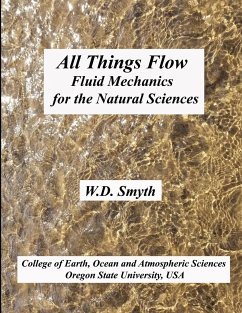This is a graduate-level textbook for students in the natural sciences. After reviewing the necessary math, it describes the logical path from Newton's laws of motion to our modern understanding of fluid mechanics. It does not describe engineering applications but instead focuses on phenomena found in nature. Once developed, the theory is applied to three familiar examples of flows that can be observed easily in Earth's atmosphere, oceans, rivers and lakes: vortices, interfacial waves, and hydraulic transitions. The student will then have both (1) the tools to analyze a wide range of naturally-occurring flows and (2) a solid foundation for more advanced studies in atmospheric dynamics and physical oceanography. Appendices give more detailed explanations and optional topics.
Hinweis: Dieser Artikel kann nur an eine deutsche Lieferadresse ausgeliefert werden.
Hinweis: Dieser Artikel kann nur an eine deutsche Lieferadresse ausgeliefert werden.








